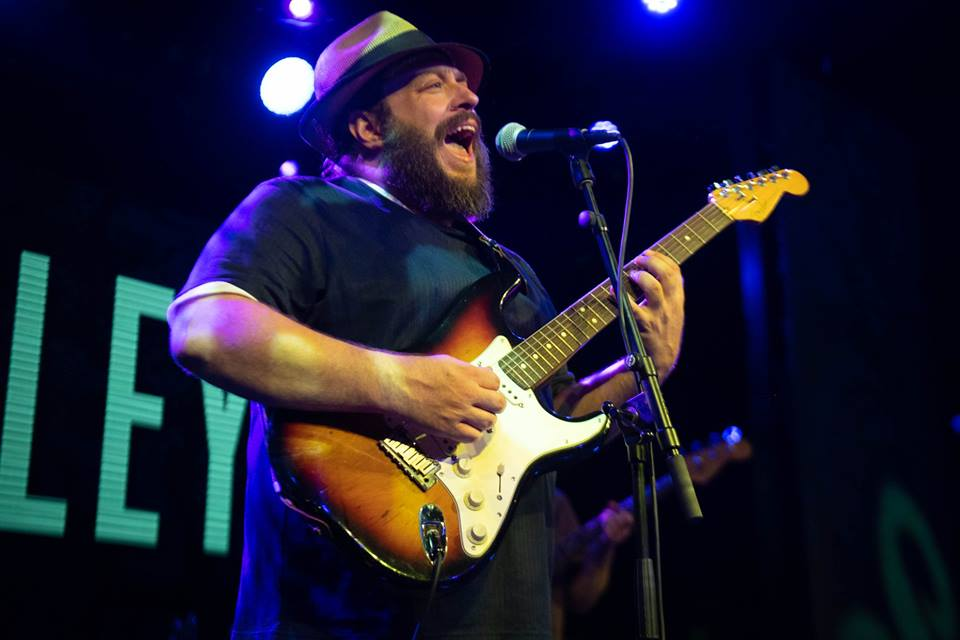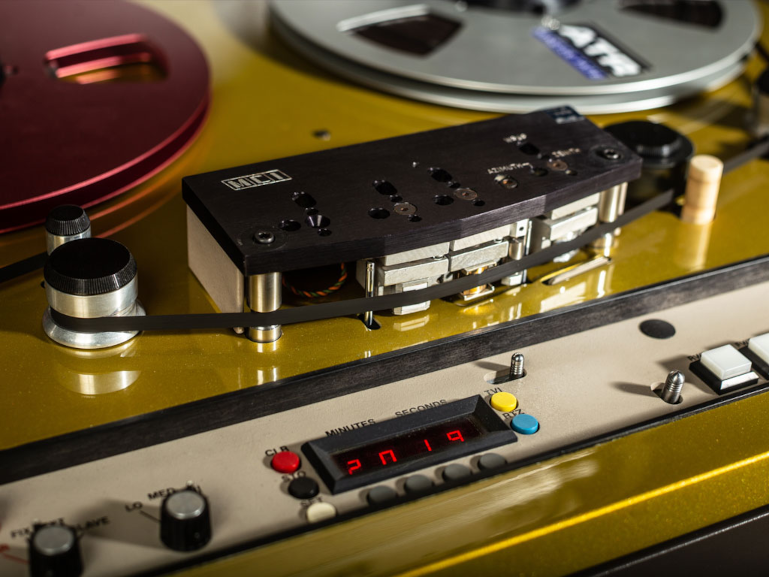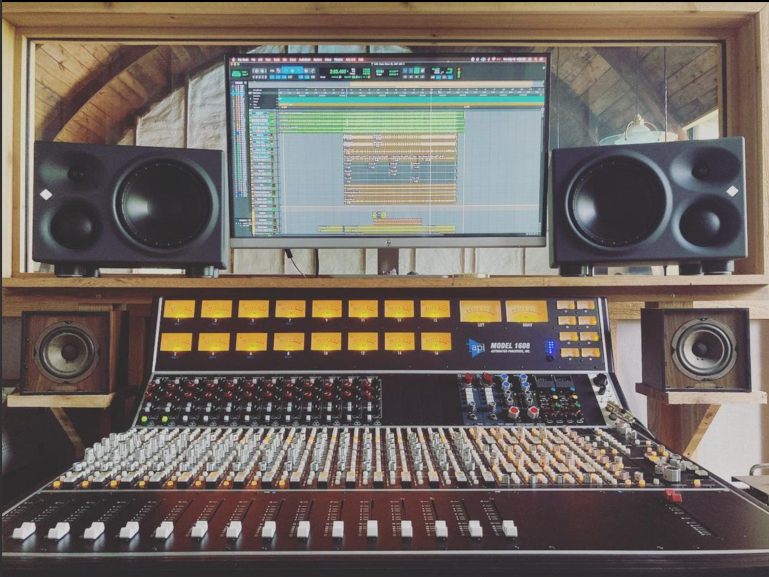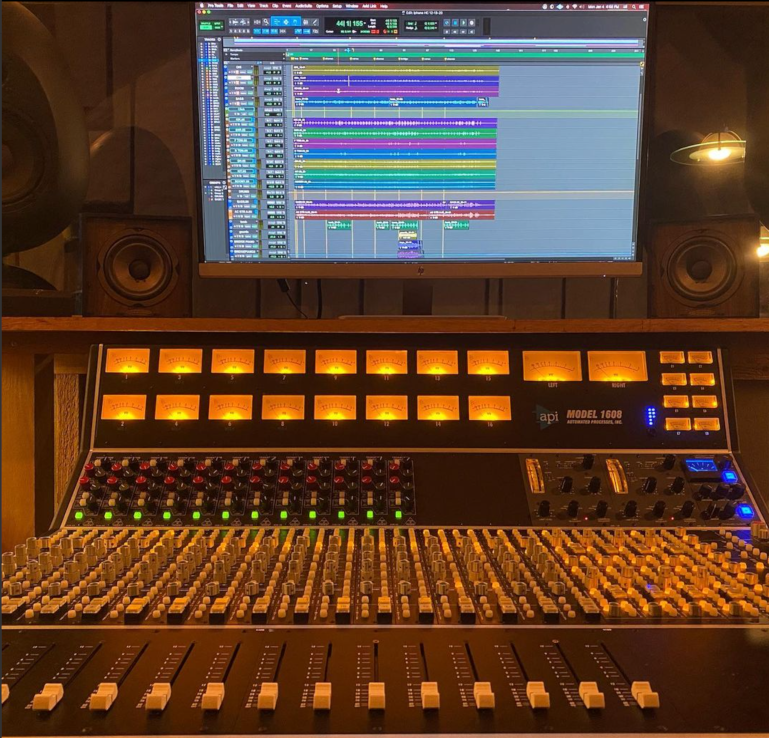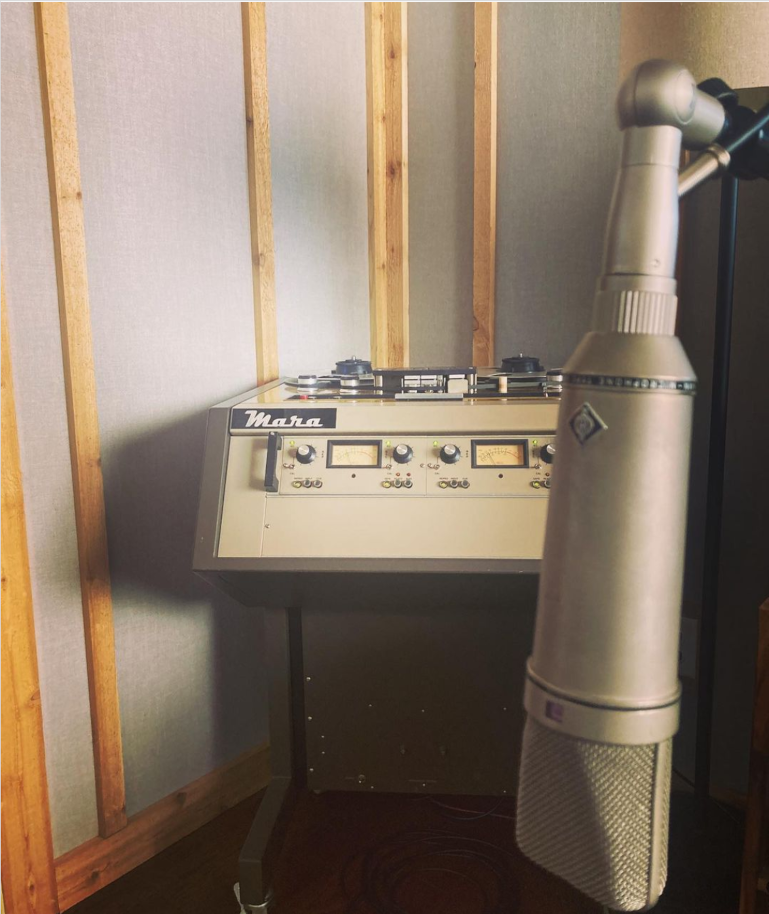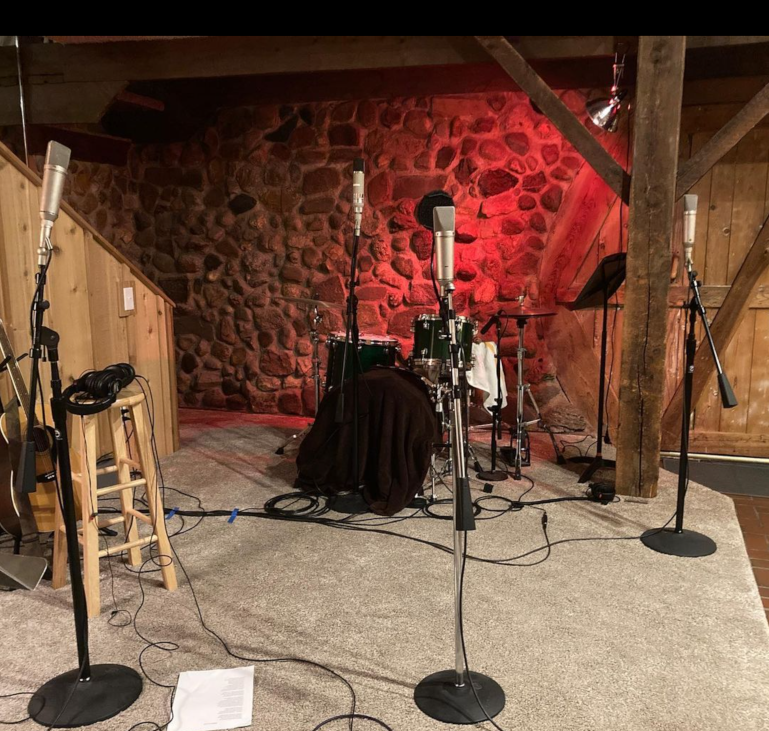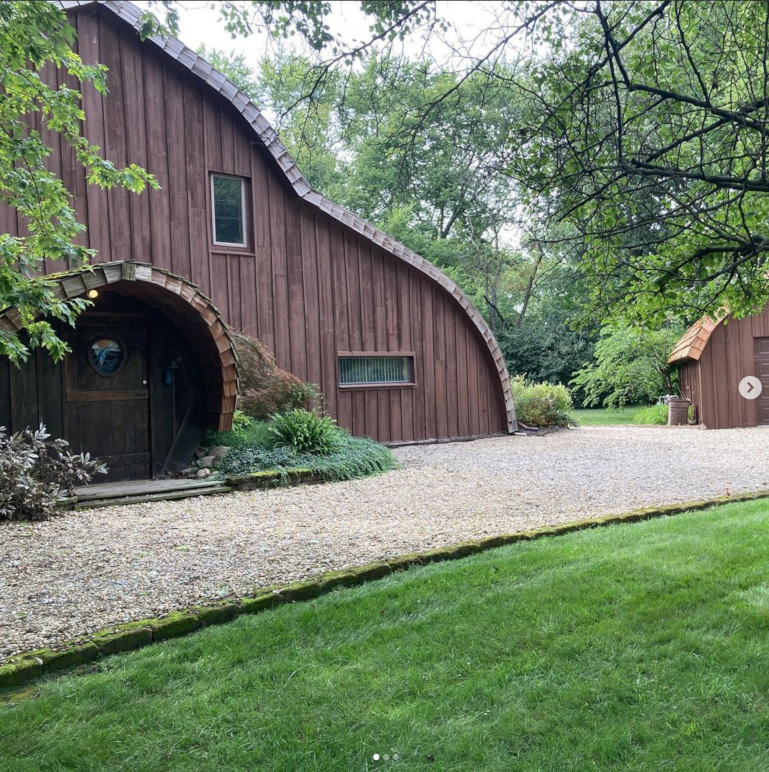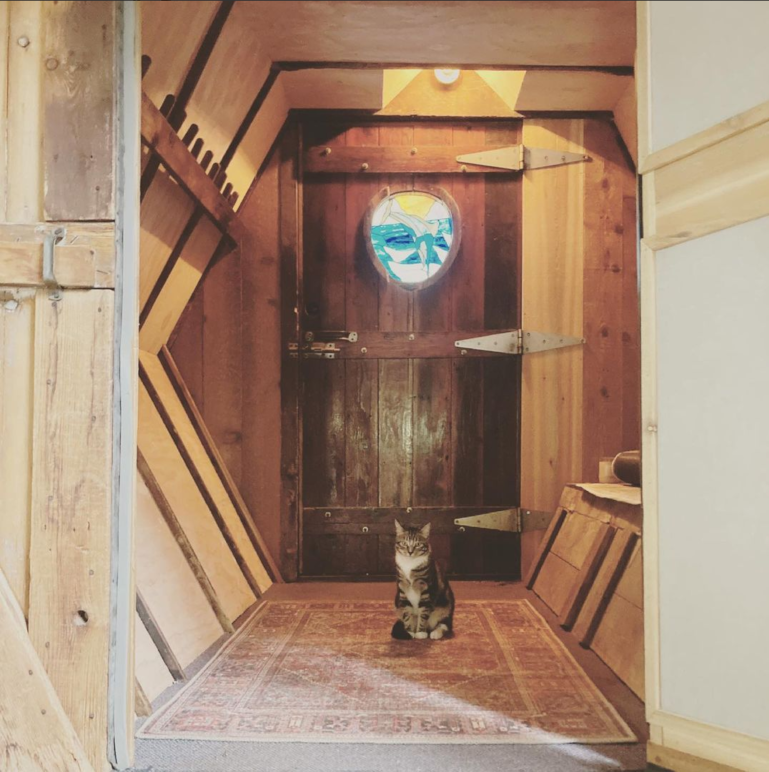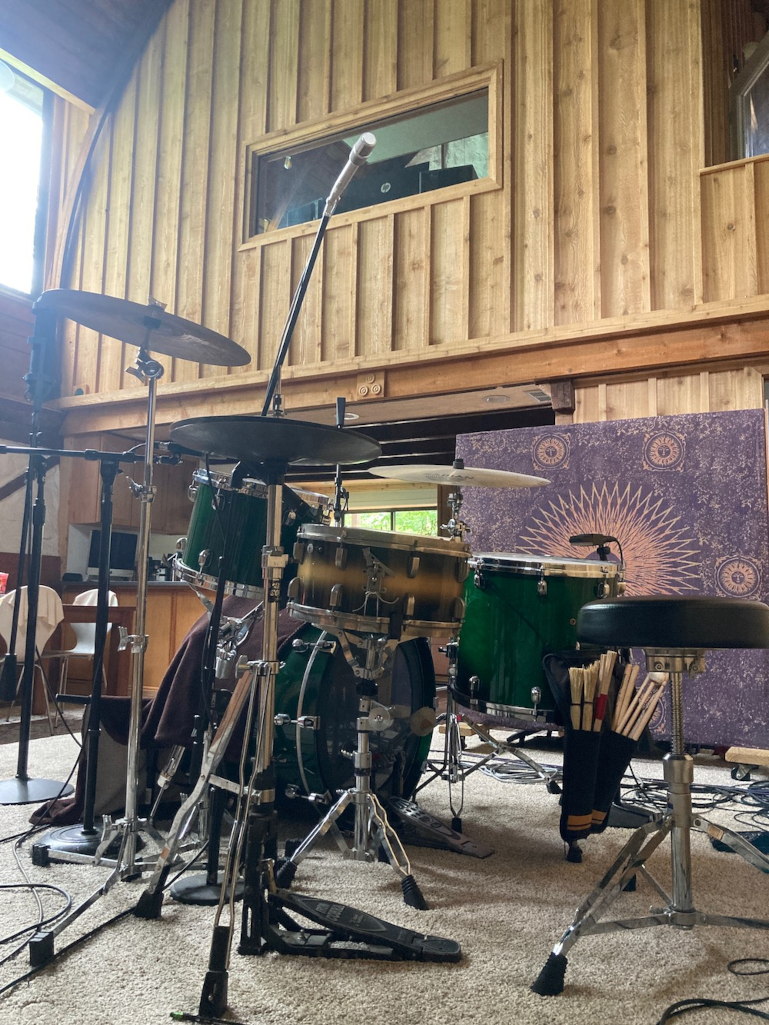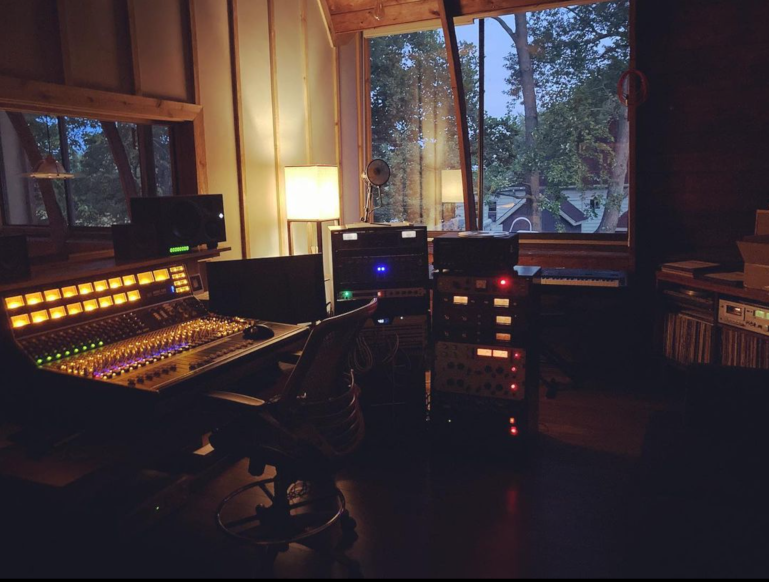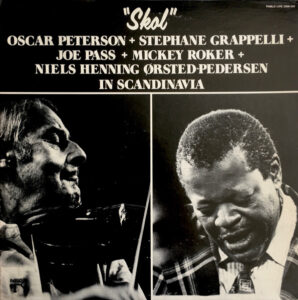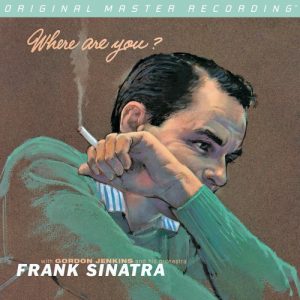Andy Duncanson and the High Cross Sound - International Phonograph, Inc., High Definition Tape Transfers, 2021. (from analog tape to DSD256, a PureDSD transfer) HERE
This is Chicago Blues recorded on 26 May 2021 at High Cross Sound. Guitarist/vocalist Andy Duncanson is a regular live performer from the Champaign/Urbana area south of Chicago. He travels throughout the country bringing his gritty Chicago blues wherever he goes. In this recording, Duncanson is joined by drummer Ian Shepherd, bassist Josh Walden, and keyboardist Kurt Reeder. This is not Duncanson's regular band, but each has been playing professionally for many years and they sound like they could have been playing together for most of that time.
Andy Duncanson from his Facebook cover photo.
The music is enjoyable, the performances are solid. I came right back to listen through the album a second time, and I'll come back again.
What greatly interests me about this recording, and the reason I'm writing about it, is how it was made and plans for further releases. Recording engineer Anthony Gravino mixed this on the fly directly to a Mara MCI JH-110 1/4" 2-track tape recorder. What I hear is a spontaneous sound, like a live performance, in a relaxed studio atmosphere.
Two-track 1/4" headblock of a Mara JH-110, image courtesy of Mara Machines.
Mara Machines' owner, Chris Mara, restores the classic MCI analog tape machines. Are you familiar with MCI? Well, if not, you are sure to have listened to dozens of albums recorded on MCI tape decks. As the Mara website states, "Pick up almost any record made in the 70s or 80s and it was likely made on an MCI console or with an MCI tape machine - Eric Clapton, Fleetwood Mac, Criteria Recording, The Bee Gees, Muscle Shoals Sound, The Rolling Stones are just a few of the many who have made great music on MCIs!"
The beauty of an MCI deck is its build simplicity and excellent sound. Mara delivers the same level of restoration for each machine they restore by tearing them completely down to the frame and re-assembling. Each Molex connector and other stress points are resoldered: power supply, transport and audio boards. Roughly 500 solder points and 80 IC chips are reworked, re-soldered or cleaned... and that’s just on the 2-Track machines. The total number of solder points and connectors multiplies quickly as tracks are added. Mara sells both 1/2" and 1/4" 2-Track machines, with the headblocks being interchangeable. There are also a 2" 16-Track and 2" 24-Track model.
Yes, the music on this album is recorded with a plethora of mikes, but it is mixed down to a two-track master right in the session. What you end up with is a two-track master created in real-time as the musicians are playing in the studio, not later in a post processing session. So, there is no post-session EQ, compression, mixing, etc. The two-track master is then transferred directly to DSD256 for a Pure DSD transfer without further processing.
Mixing console in Gravino's studio, High Cross Sound
Two-Track Mara JH-110 in Gravino's studio—the end of the recording chain
Gravino is an aficionado of classic microphones, each valued for its unique sonic qualities. And he puts his collection of microphones to good use.
In this recording, the microphones employed were: kick drum, Lawson L47 FET; snare drum, Shure SM57; Tom tom drums, AKG 414 B-ULS; drum overheads, Neumann SM69 FET; drum Kit, Coles 4038; bass, Custom Jensen DI; Wurlitzer, Radial JDI; guitar, Shure SM57; vocals, Shure SM7.
Shown in the photo below, along with a view from the second floor to the first floor recording space, is Gravino's trusty 1967 Neuman U67 used for vocals.
Gravino’s studio, High Cross Sound, must add greatly to that comfortably relaxed feel I get listening to the performers in this album. Located in an old barn that Gravino renovated on the outskirts of Urbana, the photos show an environment that should allow everyone to simply relax and focus on the music they want to make together. Certainly a contrast to the charged atmosphere of downtown Chicago where Gravino had his first studio.
The relaxed vibe is clearly enhanced with Studiocat ready to greet visitors.
Ground floor performing space with mixing studio window overlooking it from the second floor.
Control room and mixing studio
This is the first of a coming series of recordings that producer Jonathan Horwich of International Phonograph, Inc., plans to create with Anthony Gravino at High Cross Sound. HDTT will be releasing the high-resolution digital transfers. I'm certainly looking forward to to these coming releases!
Photos of High Cross Sound courtesy of Anthony Gravino.





